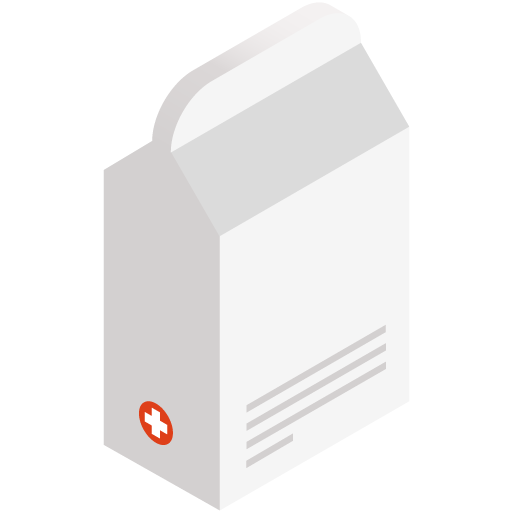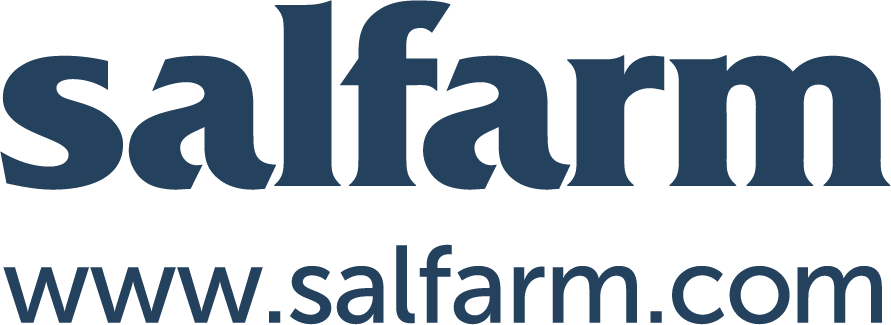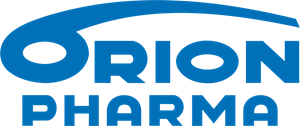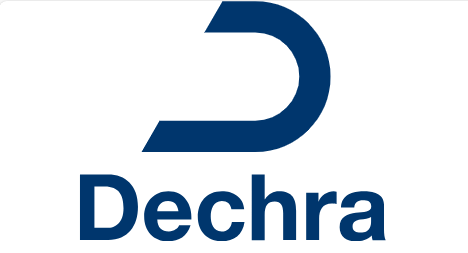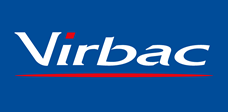Combination therapy
No results were found for your selected species
Vetmulin
Active substance
ATC code
Species
Pigs, chickens and turkeys.
Indications
Pigs
Treatment of Swine Dysentery caused by Brachyspira hyodysenteriae susceptible to tiamulin. The presence of the disease in the herd must be established before the veterinary medicinal product is used.
Treatment of Porcine Colonic Spirochaetosis (colitis) caused by Brachyspira pilosicoli susceptible to tiamulin. The presence of the disease in the herd must be established before the veterinary medicinal product is used.
Treatment of Porcine Proliferative Enteropathy (ileitis) caused by Lawsonia intracellularis susceptible to tiamulin. The presence of the disease in the herd must be established before the veterinary medicinal product is used.
Treatment and metaphylaxis of Enzootic Pneumonia caused by Mycoplasma hyopneumoniae, including infections complicated by Pasteurella multocida susceptible to tiamulin. The presence of the disease in the herd must be established before the veterinary medicinal product is used.
Treatment of Pleuropneumonia caused by Actinobacillus pleuropneumoniae susceptible to tiamulin. The presence of the disease in the herd must be established before the veterinary medicinal product is used.
Chickens
Treatment and metaphylaxis of Chronic Respiratory Disease caused by Mycoplasma gallisepticum and Airsacculitis and Infectious Synovitis caused by Mycoplasma synoviae susceptible to tiamulin. The presence of the disease in the flock must be established before the veterinary medicinal product is used.
Turkeys
Treatment and metaphylaxis of Infectious Sinusitis and Airsacculitis caused by
Mycoplasma gallisepticum, Mycoplasma synoviae and Mycoplasma meleagridis susceptible to tiamulin. The presence of the disease in the herd or flock must be established before use.
Dose to be administered and administration route
In drinking water use.
When medicating large volumes of water, prepare a concentrated solution first and then dilute to the required final concentration.
Fresh solutions of tiamulin-medicated drinking water should be made up each day. To ensure the correct dosage, body weight should be determined as accurately as possible. The intake of medicated water depends on the clinical condition of the animals. In order to obtain the correct dosage the concentration of tiamulin may need to be adjusted accordingly.
In order to avoid interactions between the ionophores and tiamulin, the veterinarian and farmer should check that the feed label does not state that it contains salinomycin, monensin and narasin.
For chickens and turkeys, in order to avoid interactions between the incompatible ionophores monensin, narasin and salinomycin and tiamulin, the feed mill supplying the birds feed should be notified that tiamulin will be used and that these anticoccidials should not be included in the feed or contaminate the feed.
The feed should be tested for the ionophores prior to use if there is any suspicion that contamination of the feed might occur.
If an interaction does occur, stop tiamulin medication immediately and replace with fresh drinking water. Remove contaminated feed as soon as possible and replace with feed not containing the tiamulin-incompatible ionophores.
Based on the recommended dose and the number and weight of animals to be treated, the exact daily concentration of the veterinary medicinal product should be calculated according to the following formula:
Dose (mg veterinary Mean body weight (kg)
medicinal product x of animals to be treated
per kg body weight per =....mg veterinary medicinal
day product per liter of drinking
water
![]()
Mean daily water consumption (liter) per animal per day’
Chickens:
For the treatment and metaphylaxis of Chronic Respiratory Disease caused by Mycoplasma gallisepticum and Airsacculitis and Infectious Synovitis caused by Mycoplasma synoviae.
The dosage is 25 mg tiamulin hydrogen fumarate (equivalent to 55.6 mg of veterinary medicinal product)/kg body weight administered daily for the period of 3 to 5 consecutive days.
Turkeys:
For the treatment and metaphylaxis of Infectious Sinusitis and Airsacculitis caused by Mycoplasma gallisepticum, Mycoplasma synoviae and Mycoplasma meleagridis. The dosage is 40 mg tiamulin hydrogen fumarate (equivalent to 88.9 mg of veterinary medicinal product)/kg body weight administered daily for the period of 3 to 5 consecutive days.
Pigs:
For the treatment of Swine Dysentery caused by Brachyspira hyodysenteriae: The dosage is 8.8 mg tiamulin hydrogen fumarate (equivalent to 19.6 mg of veterinary medicinal product)/kg body weight administered daily in the drinking water of pigs for 3 to 5 consecutive days depending on the severity of the infection and/or the duration of the disease.
For the treatment of Porcine Colonic Spirochaetosis (colitis) caused by Brachyspira pilosicoli:
The dosage is 8.8 mg tiamulin hydrogen fumarate (equivalent to 19.6 mg of veterinary medicinal product)/kg body weight administered daily in the drinking water of pigs for 3 to 5 consecutive days depending on the severity of the infection and/or the duration of the disease.
For the treatment of Porcine Proliferative Enteropathy (ileitis) caused by Lawsonia intracellularis:
The dosage is 8.8 mg tiamulin hydrogen fumarate (equivalent to 19.6 mg of veterinary medicinal product)/kg body weight administered daily in the drinking water of pigs for 5 consecutive days.
For the treatment and metaphylaxis of Enzootic Pneumonia caused by Mycoplasma hyopneumoniae, including infections complicated by Pasteurella multocida susceptible to tiamulin.
The dosage is 20 mg tiamulin hydrogen fumarate (equivalent to 44.4 mg of veterinary medicinal product)/kg body weight administered daily for 5 consecutive days.
For the treatment of Pleuropneumonia caused by Actinobacillus pleuropneumoniae susceptible to tiamulin:
The dosage is 20 mg tiamulin hydrogen fumarate (equivalent to 44.4 mg of veterinary medicinal product)/kg body weight administered daily for 5 consecutive days.
The use of suitably calibrated weighing equipment is recommended.
The maximum solubility of the veterinary medicinal product is 10 gram/liter.
Adverse reactions
Pigs:
|
Very rare (<1 animal / 10.00000 animals treated, including isolated report(s)): |
Erythema |
|
Skin oedema1 |
1 mild
Reporting adverse events is important. It allows continuous safety monitoring of a veterinary medicinal product. Reports should be sent, preferably via a veterinarian, to either the marketing authorisation holder or the national competent authority via the national reporting system. See the package leaflet for respective contact details.
Dispensing
POM-VEMA Categorisation
SUMMARY OF PRODUCT CHARACTERISTICS
1. NAME OF THE VETERINARY MEDICINAL PRODUCT
Vetmulin 450 mg/g granules for use in drinking water for pigs, chickens and turkeys.
2. QUALITATIVE AND QUANTITATIVE COMPOSITION
Active substance:
Each gram contains Tiamulin hydrogen fumarate 450.0 mg (equivalent to tiamulin 364.2 mg) (All MS except FR)
Each gram contains 364.2 mg tiamulin as 450.0 mg Tiamulin hydrogen fumarate (FR only)
Excipients:
For a full list of excipients: see section 6.1
3. PHARMACEUTICAL FORM
Granules for use in drinking water.
White to pale yellow granules
4. CLINICAL PARTICULARS
4.1 Target species
Pigs, chickens and turkeys.
4.2 Indications for use (specifying the target species)
Pigs
Treatment of Swine Dysentery caused by Brachyspira hyodysenteriae susceptible to tiamulin. The presence of the disease in the herd must be established before the product is used.
Treatment of Porcine Colonic Spirochaetosis (colitis) caused by Brachyspira pilosicoli susceptible to tiamulin. The presence of the disease in the herd must be established before the product is used.
Treatment of Porcine Proliferative Enteropathy (ileitis) caused by Lawsonia intracellularis susceptible to tiamulin. The presence of the disease in the herd must be established before the product is used.
Treatment and metaphylaxis of Enzootic Pneumonia caused by Mycoplasma hyopneumoniae, including infections complicated by Pasteurella multocida susceptible to tiamulin. The presence of the disease in the herd must be established before the product is used.
Treatment of Pleuropneumonia caused by Actinobacillus pleuropneumoniae susceptible to tiamulin. The presence of the disease in the herd must be established before the product is used.
Chickens
Treatment and metaphylaxis of Chronic Respiratory Disease caused by Mycoplasma gallisepticum and Airsacculitis and Infectious Synovitis caused by Mycoplasma synoviae susceptible to tiamulin. The presence of the disease in the flock must be established before the product is used.
Turkeys
Treatment and metaphylaxis of Infectious Sinusitis and Airsacculitis caused by Mycoplasma gallisepticum, Mycoplasma synoviae and Mycoplasma meleagridis susceptible to tiamulin.
The presence of the disease in the herd or flock must be established before use.
4.3 Contraindications
Do not use in animals with known hypersensitivity to the active ingredient or to any of the excipients.
‘Do not use in pigs and birds that could receive products containing monensin, narasin or salinomycin during or for at least seven days before or after treatment with tiamulin. Severe growth depression or death may result’.
See section 4.8 for information regarding interaction between tiamulin and ionophores
4.4 Special warnings (for each target species)
Animals with reduced water intake and/or in a debilitated condition should be treated parenterally.
Water intake may be depressed during the administration of tiamulin in birds. It appears to be concentration-dependent with 500 mg tiamulin hydrogen fumarate (equivalent to 1.11 g of product) in 4 litres of water reducing intake by approximately 10% and 500 mg tiamulin hydrogen fumarate (equivalent to 1.11 g of product) in 2 litres of water by 15% in chickens. It does not appear to have any adverse effect on overall performance of the birds or efficacy of the veterinary medicinal product but water intake should be monitored at frequent intervals, especially in hot weather. In turkeys, it is more marked, with approximately 20% reduction and therefore it is recommended not to exceed a concentration of 500 mg tiamulin hydrogen fumarate in 2 litres of the drinking water
Repeated use should be avoided by improving management practice and thorough cleansing and disinfection. 4.5 Special precautions for use
Special precautions for use in animals
Use of the product should be based on susceptibility testing of the bacteria isolated from the animal. If this is not possible, therapy should be based on local (regional, farm level) epidemiological information about susceptibility of target bacteria.
Inappropriate use of the veterinary medicinal product may increase the prevalence of bacteria resistant to tiamulin.
Special precautions for the person administering the veterinary medicinal product to animals
Direct contact with the skin, eyes and mucous membranes should be avoided by wearing overalls, impermeable rubber gloves and safety glasses when preparing or handling the product.
In case of accidental eye contact, rinse the eyes thoroughly with clean running water immediately. Seek medical advice if irritation persists.
When handling the product, inhalation of the dust must be avoided by wearing a disposable half-mask respirator conforming to European Standard EN 149 or a non-disposable respirator to European Standard EN 140 with a filter to EN 143.
Contaminated clothing should be removed and any splashes on to the skin should be washed off immediately.
Wash hands after use.
Accidental ingestion should be avoided. In case of accidental ingestion, seek medical advice immediately and show the package leaflet or label to the physician.
People with known hypersensitivity to tiamulin should avoid contact with the product.
4.6 Adverse reactions (frequency and seriousness)
On very rare occasions erythema or mild oedema of the skin may occur in pigs following the use of Tiamulin
The frequency of adverse reactions is defined using the following convention: - very common (more than 1 in 10 animals treated displaying adverse reaction(s))
- common (more than 1 but less than 10 animals in 100 animals treated)
- uncommon (more than 1 but less than 10 animals in 1,000 animals treated)
- rare (more than 1 but less than 10 animals in 10,000 animals treated) - very rare (less than 1 animal in 10,000 animals treated, including isolated reports).
4.7 Use during pregnancy, lactation or lay
Pigs
The product can be used during pregnancy and lactation.
Chickens and turkeys
The product can be used in laying chickens and in breeding chickens and turkeys.
4.8 Interaction with other medicinal products and other forms of interaction
Tiamulin has been shown to interact with ionophores such as monensin, salinomycin and narasin and may result in signs indistinguishable from an ionophore toxicosis. Animals should not receive products containing monensin, salinomycin or narasin during or at least 7 days before or after treatment with tiamulin. Severe growth depression, ataxia, paralysis or death may result.
If signs of an interaction do occur, stop both the administration of tiamulinmedicated drinking water and also the administration of ionophorecontaminated feed immediately. The feed should be removed and replaced with fresh feed not containing the anticoccidials monensin, salinomycin or narasin.
Concomitant use of tiamulin and the divalent ionophore anticoccidials lasalocid and semduramicin do not appear to cause any interaction, however the concomitant use of maduramicin may lead to a mild to moderate growth depression in chickens. The situation is transient and recovery normally occurs within 3-5 days following withdrawal of tiamulin treatment
4.9 Amount(s) to be administered and administration route
For oral administration through the drinking water.
When medicating large volumes of water, prepare a concentrated solution first and then dilute to the required final concentration.
Fresh solutions of tiamulin-medicated drinking water should be made up each day.
To ensure the correct dosage, body weight should be determined as accurately as possible to avoid underdosing. The intake of medicated water depends on the clinical condition of the animals. In order to obtain the correct dosage the concentration of tiamulin has to be adjusted accordingly.
In order to avoid interactions between the ionophores and tiamulin, the veterinarian and farmer should check that the feed label does not state that it contains salinomycin, monensin and narasin.
For chickens and turkeys, in order to avoid interactions between the incompatible ionophores monensin, narasin and salinomycin and tiamulin, the feed mill supplying the birds feed should be notified that tiamulin will be used and that these anticoccidials should not be included in the feed or contaminate the feed.
The feed should be tested for the ionophores prior to use if there is any suspicion that contamination of the feed might occur.
If an interaction does occur, stop tiamulin medication immediately and replace with fresh drinking water. Remove contaminated feed as soon as possible and replace with feed not containing the tiamulin-incompatible ionophores.
The dosage of the product to be incorporated should be established according to the following formula:
![]() Dose (mg product Mean body
Dose (mg product Mean body
per kg body weight per x weight (kg) of
![]() day animals to be =....mg product per litre of treated drinking water
day animals to be =....mg product per litre of treated drinking water
![]()
Mean daily water consumption (litre) per animal per day’
Chickens:
For the treatment and metaphylaxis of Chronic Respiratory Disease caused by Mycoplasma gallisepticum and Airsacculitis and Infectious Synovitis caused by Mycoplasma synoviae.
The dosage is 25 mg tiamulin hydrogen fumarate (equivalent to 55.6 mg of product)/kg body weight administered daily for the period of 3 to 5 consecutive days.
Turkeys:
For the treatment and metaphylaxis of Infectious Sinusitis and Airsacculitis caused by Mycoplasma gallisepticum, Mycoplasma synoviae and Mycoplasma meleagridis.
The dosage is 40 mg tiamulin hydrogen fumarate (equivalent to 88.9 mg of product)/kg body weight administered daily for the period of 3 to 5 consecutive days.
Pigs:
For the treatment of Swine Dysentery caused by Brachyspira hyodysenteriae: The dosage is 8.8 mg tiamulin hydrogen fumarate (equivalent to 19.6 mg of product)/kg body weight administered daily in the drinking water of pigs for 3 to 5 consecutive days depending on the severity of the infection and/or the duration of the disease.
For the treatment of Porcine Colonic Spirochaetosis (colitis) caused by Brachyspira pilosicoli:
The dosage is 8.8 mg tiamulin hydrogen fumarate (equivalent to 19.6 mg of product)/kg body weight administered daily in the drinking water of pigs for 3 to 5 consecutive days depending on the severity of the infection and/or the duration of the disease.
For the treatment of Porcine Proliferative Enteropathy (ileitis) caused by Lawsonia intracellularis:
The dosage is 8.8 mg tiamulin hydrogen fumarate (equivalent to 19.6 mg of product)/kg body weight administered daily in the drinking water of pigs for 5 consecutive days.
For the treatment and metaphylaxis of Enzootic Pneumonia caused by Mycoplasma hyopneumoniae, including infections complicated by Pasteurella multocida susceptible to tiamulin.
The dosage is 20 mg tiamulin hydrogen fumarate (equivalent to 44.4 mg of product)/kg body weight administered daily for 5 consecutive days. For the treatment of Pleuropneumonia caused by Actinobacillus pleuropneumoniae susceptible to tiamulin:
The dosage is 20 mg tiamulin hydrogen fumarate (equivalent to 44.4 mg of product)/kg body weight administered daily for 5 consecutive days.
Use suitably calibrated weighing equipment to weigh the necessary amount of product.
The maximum solubility of the product is 10 gram/liter.
4.10 Overdose (symptoms, emergency procedures, antidotes), if necessary
Chickens and turkeys:
Regarding poultry, there is a relatively high therapeutic index with tiamulin hydrogen fumarate and the likelihood of an overdose is considered remote especially as water intake and hence tiamulin hydrogen fumarate intake is reduced if abnormally high concentrations are given. The LD5 is 1090 mg/kg body weight for chickens and 840 mg/kg body weight for turkeys.
The clinical signs of toxicity in chickens are vocalisation, clonic cramps and lying in a lateral position. Signs in turkeys are: clonic cramps, lateral or dorsal lying position, salivation and ptosis.
Pigs:
Single oral doses of 100 mg tiamulin hydrogen fumarate/kg body weight in pigs caused hyperpnoea and abdominal discomfort. At 150 mg tiamulin hydrogen fumarate/kg body weight no central nervous system effects were noted except for tranquillisation. At 55 mg tiamulin hydrogen fumarate/kg body weight given daily for 14 days, a transient salivation and slight gastric irritation occurred. Tiamulin hydrogen fumarate is considered to have an adequate therapeutic index in the pig and a minimum lethal dose has not been established.
If signs of intoxication do occur promptly remove the medicated water and replace with fresh water.
4.11 Withdrawal period(s)
Pigs
Meat and offal: 2 days (8.8 mg tiamulin hydrogen fumarate (equivalent to 19.6 mg of product)/kg body weight)
Meat and offal: 4 days (20 mg tiamulin hydrogen fumarate (equivalent to 44.4 mg of product)/kg body weight)
Chickens
Meat and offal: 2 days
Eggs: Zero days
Turkeys
Meat and offal: 6 days
5. PHARMACOLOGICAL OR IMMUNOLOGICAL PROPERTIES
ATC Vet Code: QJ01XQ01
Pharmacotherapeutic group:
Antibacterials for systemic use
Pleuromutilins
5.1 Pharmacodynamic properties
Tiamulin hydrogen fumarate is a semi-synthetic diterpene antibiotic. The mode of action is by inhibition of ribosomal protein synthesis.It is a bacteriostatic antibiotic and the spectrum of activity includes: porcine and avian Mycoplasma species as well as gram-positive aerobes (streptococci and staphylococci), anaerobes (clostridia), gram-negative anaerobes (Brachyspira hyodysenteriae, Brachyspira pilosicoli), and gram-negative aerobes (Actinobacillus pleuropneumoniae and Pasteurella multocida).
Tiamulin has been shown to act at the 70S ribosome. The primary binding site is on the 50S subunit and there is possibly a secondary site where the 50S and 30S subunits join. Tiamulin appears to inhibit microbial protein production by producing biochemically inactive initiation complexes, which prevent elongation of the polypeptide chain.
Bactericidal concentrations can be reached but vary according to the bacterium. It can be as little as two times the MIC for Brachyspira hyodysenteriae and Actinobacillus pleuropneumoniae but as high as 50 -100 times the bacteriostatic level for Staphylococcus aureus. The MIC distribution for tiamulin against Brachyspira hyodysenteriae is bimodal, suggesting reduced susceptibility of some strains to tiamulin. Due to technical constraints the susceptibility of Lawsonia intracellularis is difficult to test in vitro.
In vitro research has shown that resistant bacterial mutants can be created through multi step resistance. Development of resistance in mycoplasmas is slower. Resistance against B. hyodysenteriae has been seen, and can vary geographically.
Cross resistance between tiamulin and tylosin tartrate has been reported: micro-organisms that are resistant for tiamulin, are also resistant for tylosin tartrate, but not vice versa.
Resistance in Brachyspirae hyodysenteriae can be caused by a point mutation in the 23S rRNA gene.
5.2 Pharmacokinetic particulars
Tiamulin is well absorbed from the gastrointestinal tract of chickens and turkeys.
Chicken
Tiamulin hydrogen fumarate is well absorbed in chickens (70-95%) after oral administration and reaches peak concentrations in 2-4 hours (Tmax 2.85 hours). Following a 50 mg tiamulin hydrogen fumarate/kg body weight single dose the Cmax was 4.02 μg/ml in serum by microbiological assay and after a 25 mg/kg dose it was 1.86 μg/ml. In drinking water the 250 ppm (0.025%) tiamulin hydrogen fumarate concentration provided a rolling serum level over a 48 hour medication period of 0.78 μg/ml (range 1.4-0.45 μg/ml) and at 125 ppm (0.0125%), 0.38 μg/ml (range 0.65-0.2 μg/ml) in eight-week old chickens. Serum protein-binding was approximately 45%. It distributes widely through the body and has been shown to concentrate in the liver and kidney (sites of excretion) and in the lung (30 times serum level). Excretion is mainly via the bile (55-65%) and kidney (15-30%) as mainly microbiologically inactive metabolites and is quite rapid, 99% of the dose within 48 hours.
Turkey
In turkeys serum levels of tiamulin hydrogen fumarate are lower with a 50 mg tiamulin hydrogen fumarate/kg body weight single dose giving a Cmax of 3.02 µg/ml in serum, and 25 mg/kg giving 1.46 μg/ml. These were achieved at about 2-4 hours after dosing. In breeders on 0.025% tiamulin hydrogen fumarate the average serum level was 0.36 μg/ml (range 0.22-0.5 μg/ml). Serum protein-binding was approximately 50%.
Pigs
Tiamulin hydrogen fumarate is well absorbed in the pig (over 90%) following oral administration and widely distributed through the body. Following a single oral dose of 10 mg and 25 mg tiamulin hydrogen fumarate/kg body weight the Cmax was 1.03μg/ml and 1.82 μg/ml in serum respectively by microbiological assay and the Tmax was 2 hours for both. It has been shown to concentrate in the lung, polymorphonuclear leucocytes and also in liver, where it is metabolised and excreted (70-85%) in the bile, the remainder is excreted via the kidney (15-30%). Serum protein binding is approximately 30%. Tiamulin, which has not been absorbed or metabolised, passes down the intestines to the colon. Colon contents concentrations of tiamulin have been estimated at 3.41 μg/ml following administration of tiamulin hydrogen fumarate at 8.8 mg/kg body weight.
5.3 Environmental properties
Tiamulin hydrogen fumarate is persistent in soils
6. PHARMACEUTICAL PARTICULARS
6.1 List of excipients
Povidone
Lactose monohydrate
6.2 Incompatibilities
In the absence of compatibility studies, this veterinary medicinal product must not be mixed with other veterinary medicinal product.
6.3 Shelf life
Shelf life of the veterinary medicinal product as packaged for sale: 2 years.
Shelf life after first opening the immediate packaging: 3 months.
Shelf life after dilution or reconstitution according to directions: 24 hours.
6.4 Special precautions for storage
Do not refrigerate or freeze. Store in original container.
6.5 Nature and composition of immediate packaging
Block bottomed zipped 1 kg bag of polyethylene terephthalate/aluminium/low density Polyethylene.
6.6 Special precautions for the disposal of unused veterinary medicinal product or waste materials derived from the use of such products
Any unused veterinary medicinal product or waste materials derived from such veterinary medicinal product should be disposed of in accordance with local requirements
7. MARKETING AUTHORISATION HOLDER
Huvepharma N.V.
Uitbreidingstraat 80
Antwerpen
B-2600
Belgium
8. MARKETING AUTHORISATION NUMBER
Vm 30282/4002
9. DATE OF FIRST AUTHORISATION
19 March 2009
10. DATE OF REVISION OF THE TEXT
August 2018

Approved 23 August 2018
 TRUSTED SOURCE
TRUSTED SOURCE
